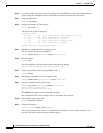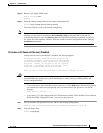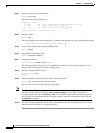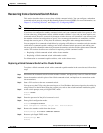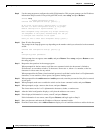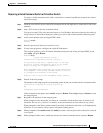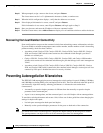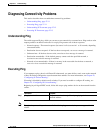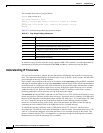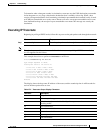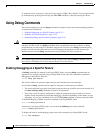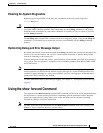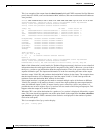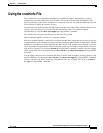
27-11
Catalyst 3550 Multilayer Switch Software Configuration Guide
78-11194-03
Chapter 27 Troubleshooting
Diagnosing Connectivity Problems
Diagnosing Connectivity Problems
This section describes how to troubleshoot connectivity problems:
• Understanding Ping, page 27-11
• Executing Ping, page 27-11
• Understanding IP Traceroute, page 27-12
• Executing IP Traceroute, page 27-13
Understanding Ping
The switch supports IP ping, which you can use to test connectivity to remote hosts. Ping sends an echo
request packet to an address and waits for a reply. Ping returns one of these responses:
• Normal response—The normal response (hostname is alive) occurs in 1 to 10 seconds, depending
on network traffic.
• Destination does not respond—If the host does not respond, a no-answer message is returned.
• Unknown host—If the host does not exist, an unknown host message is returned.
• Destination unreachable—If the default gateway cannot reach the specified network, a
destination-unreachable message is returned.
• Network or host unreachable—If there is no entry in the route table for the host or network, a
network or host unreachable message is returned.
Executing Ping
If you attempt to ping a host in a different IP subnetwork, you must define a static route to the network
or have IP routing configured to route between those subnets. For more information, see Chapter 22,
“Configuring IP Unicast Routing.”
IP routing is disabled by default on all switches. If you need to enable or configure IP routing, see
Chapter 22, “Configuring IP Unicast Routing.”
Beginning in privileged EXEC mode, follow this step to ping another device on the network from the
switch:
Note Though other protocol keywords are available with the ping command, they are not supported in this
release.
Command Purpose
Step 1
ping ip host | address Ping a remote host through IP or by supplying the host name or
network address.




